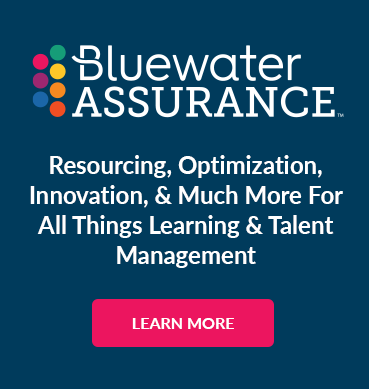6 Benefits of an HCM Blueprint for Workforce Management
by Jenny Campbell | September 23, 2019 07:41 AM | Shark Bites - Ultimate Edition, Blueprint

In a 2015 Chaos Report, the Standish Group assessed more than 50,000 software development projects, ranging from small enhancements to massive systems re-engineering implementations. They found that less than 29 percent of those projects were successful, with as many as 19 percent failing outright. With success rates like that, any human capital management (HCM) initiative becomes daunting. How can you make sure you’re part of the 29 percent that succeed?
Before engaging in any workforce-related endeavor, it is critical to understand your current state, identify opportunities to improve and develop a robust framework for migration to a future state. It’s essential to have a plan, a business process blueprint that takes into consideration all these variables and maps your path to success.
What is blueprinting?
Blueprinting is a combination of management philosophy, discipline, capabilities, and technology. At Bluewater, we use a methodology that is geared specifically toward the human capital management and workforce management worlds. The process of blueprinting allows us to define how your organization functions today, and how you’d like it to function in the future. We identify several critical factors including target processes, events or triggers, functions, activities, capabilities, dependencies, and systems. We use this information to get an accurate picture of the business model we are seeking to change.
A workforce change is about more than technology – so a methodical, holistic blueprinting approach is critical to success. Here are 6 ways that blueprinting benefits organizations.
1. Improved agility
To remain competitive in today’s environment, companies must be able to quickly react to changes — whether regulatory, competitive, or technology-driven. Regardless of the cause of change, agility is the key to remaining competitive. An HCM blueprint serves as a map of your current state so that you can quickly assess what changes to the current state might help you meet these demands. As the processes develop, management can see areas of improvement, target change, and evolve to meet environmental shifts.
2. Increased efficiency and enable continuous improvement
The real measure of your HCM investment is the initial and ongoing return on investment (ROI). But it’s difficult to evaluate system effectiveness without having defined the areas in need of improvement. A blueprint brings inefficient or ill-defined processes to the surface, allowing you to pinpoint necessary changes before you implement your system around a bad process. Perhaps a small process change or training initiative can eliminate the need for costly add-ons or custom technology investment. Continuous improvement is key to leveraging your initial spending on both technology and human capital.
3. Enhanced compliance
Non-compliance with rules and regulations impacting business productivity is costly. Having an HCM blueprint positions an organization to create an environment that is compliant and secure. It also shelters the organization and its shareholders from internal issues such as time theft and scheduling issues where employee safety is a concern.
4. Increase executive-level visibility
During your implementation journey, having a WFM blueprint can provide much-needed clarity. By targeting the process instead of just configuration requirements, you can create a common language that can be distributed across multiple levels of management and decision-making. Given that one of the most common reasons for project failures is poor communication, establishing effective communication is critical to your success. An HCM blueprint provides the forum needed for this required level of stakeholder engagement.
5. Simplified training, change management, and knowledge transfer
Often, companies operate under the assumption that employees know and will develop their understanding of the process. This assumption is wrong. An HCM blueprint provides a description of your current workflow and helps organizations distribute the information efficiently among their workforce. This allows your organization to keep everyone on the same page and enables the identification and delivery of any further required training to help alleviate the disruption and stress that often accompany HCM initiatives.
6. Clearly defined benefits and success criteria
Success is open to multiple definitions and interpretations. One way to view success is the end result of providing sustainable benefits that support end-users. Frequently an HCM program is viewed as a simple clock upgrade system replacement that delivers no true value. Whether performing an upgrade or embarking upon a new system implementation, it is imperative to clearly define what the organizational benefits will be. They could be shortening recruitment time, reducing incident volumes (requests for information or technical), overtime optimization, or shortening the payroll processing cycle.
Too many success criteria can become overwhelming and a lack of success criteria will have you operating in a vacuum. Often, an HCM system is seen as an audit trail for a broader corporate initiative but HCM systems have standalone benefits that shouldn’t be ignored. The tangible benefits to your organization can easily be captured if metrics are defined at the forefront.
An HCM blueprint gives management the ability to see not just how an organization is managing its workforce, but also how each process is functioning. In time, this data can lead to cost savings, increased labor margin, and improvements in overall efficiency. If the right stakeholders are engaged and brought together, it takes less than three months to define an HCM blueprint. Once established, the rest is straightforward with the outcomes of serving employees and employers alike.
Interested in learning more about Learning & Talent Technology?
Feel free to reach out to us directly!
Search Our Blogs
Categories
- Ad Hoc (1)
- ADMIN (1)
- administration (1)
- AI (2)
- analytics (2)
- anxiety (1)
- Artificial intelligence (2)
- automation (1)
- BI (1)
- blog (1)
- Blueprint (1)
- center of excellence (10)
- Communication (2)
- COVID-19 (2)
- Culture (1)
- Custom Content (1)
- customer service (1)
- Data (1)
- Employee Engagement (1)
- Shark Bites - Cornerstone Edition (12)
- Shark Bites - SumTotal Edition (4)
- Shark Bites - Ultimate Edition (5)
- The Future of Learning (16)
- The Future of Talent Management (30)
- User Experience (2)
- UX (2)
- wellbeing (1)

